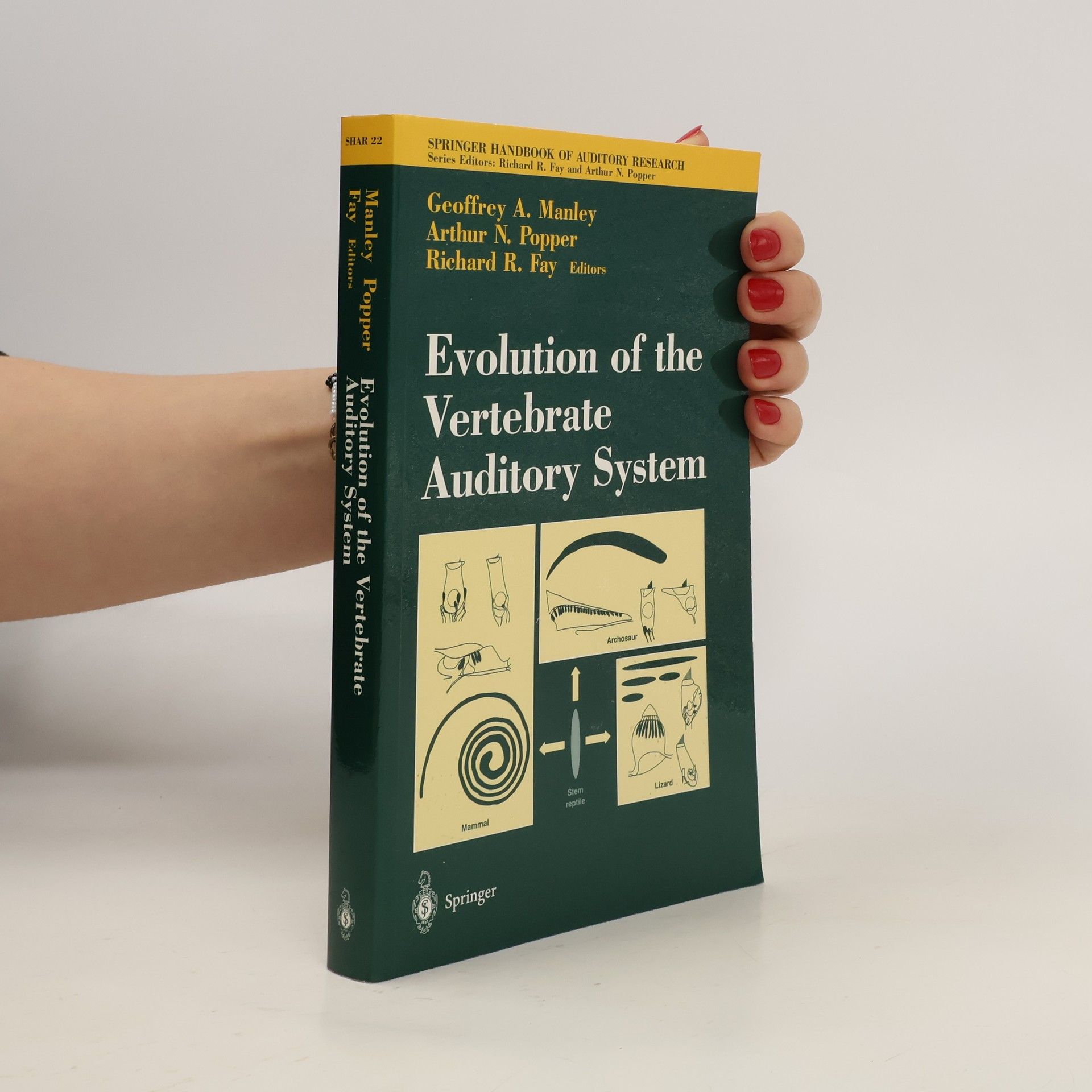"Evolution of the Vertebrate Auditory System" explores the diverse sensory structures for hearing across fish, amphibians, reptiles, birds, and mammals. It examines the evolutionary history and specialization of sensory hair cells, detailing adaptations for land existence and sound analysis. Ideal for biologists and clinicians alike.
Richard R. Fay Knihy





Comparative hearing: fish and amphibians
- 438 stránok
- 16 hodin čítania
Experimental approaches to auditory research make use of validated animal models to determine what can be generalized from one species to another. This volume brings together our current understanding of the auditory systems of fish and amphibians. To address broader comparative issues, this book treats both fish and amphibians together, to overcome the differing theoretical and experimental paradigms that underlie most work on these groups.
Vertebrate Hair Cells
- 458 stránok
- 17 hodin čítania
"Vertebrate Hair Cells" offers an in-depth exploration of mechanosensory receptor cells in the inner ear, covering development, transduction, and synaptic transmission through various experimental approaches. Aimed at advanced students and researchers, it distinguishes itself by focusing on experimental findings and their implications for future studies.
Development of the Inner Ear
- 241 stránok
- 9 hodin čítania
The Springer Handbook of Auditory Research offers comprehensive reviews on key topics in auditory research, catering to students, postdocs, and clinical investigators. Each volume serves as an overview and guide, focusing on well-established areas and emerging fields in hearing science, with contributions from experts.
Since there is only the most limited fossil record of sensory systems available, much of the evolutionary history of vertebrate sensory systems has to be extrapolated from a thorough knowledge of comparative sensory biology. The papers in this publication illustrate the two contrasting themes of conservation and innovation in the evolution of structures and functions of sensory systems. Leading experts apply their knowledge of comparative sensory biology in an attempt to add to our understanding of the evolution of vertebrate sensory systems. Readers will find many new ideas and fresh insights into how sensory systems may have evolved.